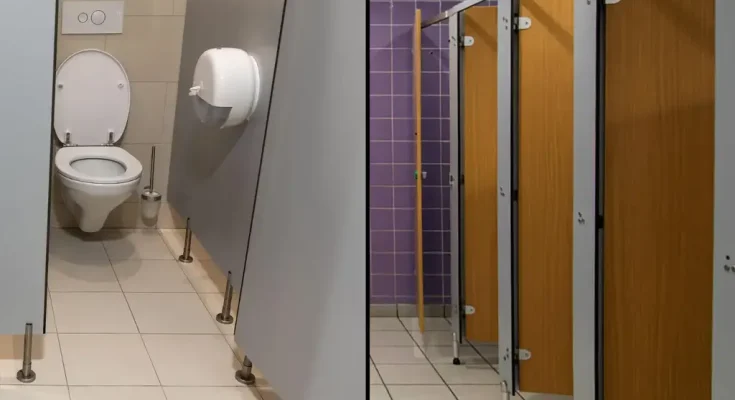People are just learning why public restroom doors don’t touch the ground.
When you enter a washroom, one of the first things you may notice is that the loo doors don’t extend to the floor.
It may seem an unusual design choice, however, it serves several important purposes.

TikTok creator @mattypstories, known for sharing lesser-known facts, has gone viral after explaining why it’s a common sight in public restrooms.
His video begins: “You’ve probably wondered at one point or another why bathroom doors don’t go all the way to the ground. But there are actually many logical reasons why they do this.”
Alongside Matty’s finding, WC Portables has shared the many purposes behind the gap.
Check out seven reasons why restroom doors don’t touch the floor below:
1. Safety
Matty explains that one of the primary reasons is safety.
The gap allows for a quick assessment of the situation and a point of entry if someone were to fall unconscious or experience a medical emergency inside a stall.
It also allows a user to escape the stall if the lock on the door becomes jammed – although it’s not ideal to be crawling on a public restroom floor, it’s much better than being trapped in such a tight spot.
2. Improves ventilation
It may go without saying but public restrooms can be breeding grounds for unpleasant odors and bacteria.
The gap at the bottom of the stall doors promotes better air circulation, helping to maintain a fresher environment.
WC Portables explains: “It helps your toilet experience become bearable. Without the gap, the odor is sustained in a stall and becomes unbearable to subsequent users.”
3. Enhanced cleanliness
A gap in stall doors can make it a little easier to maintain the cleanliness of a public restroom.
It allows custodial staff to clean the floors more thoroughly and efficiently.

4. Cost-effective
From a construction and maintenance perspective, shorter doors are more cost-effective.
They require less material to produce and are easier to install.
These doors are also less likely to suffer damage since they don’t touch the floor, reducing the frequency and cost of repairs or replacements.
Matty adds: “It’s a lot cheaper to buy a door that has part of it cut off than the full door itself.”
5. Prevents bad toilet habits and behavior
The gap at the bottom of the doors helps deter inappropriate behavior, such as graffiti or vandalism, as it increases visibility.

6. Easier to determine availability
In busy public restrooms, particularly in places like airports, malls, or stadiums, it’s essential to manage efficiency.
The gap allows people waiting in line to see which stalls are occupied without knocking or peeking through gaps.
This visibility helps reduce wait times and frustration for users.
7. Speeds up queue
Finally, individuals are much more likely to ‘wrap up’ their toileting needs if a gap allows people to listen to their business.
“Toilets with doors of this nature could negatively impact people’s privacy,” WC Portables adds.
@mattypstories And now you know!🚽#bathroom#facts#themoreyouknow ♬ Paris – Else




